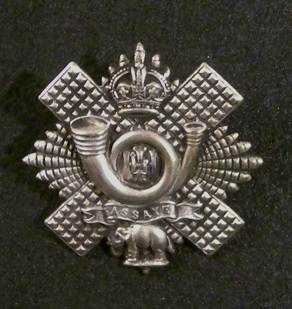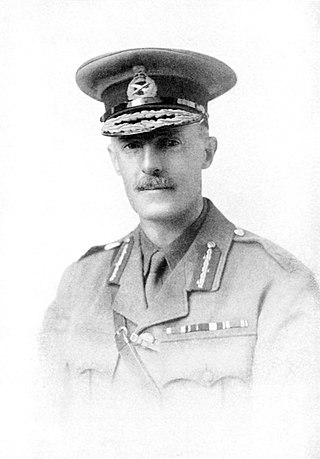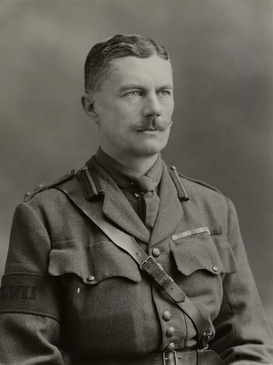
The Highland Light Infantry (HLI) was a light infantry regiment of the British Army formed in 1881. It took part in the First and Second World Wars, until it was amalgamated with the Royal Scots Fusiliers in 1959 to form the Royal Highland Fusiliers which later merged with the Royal Scots Borderers, the Black Watch, the Highlanders and the Argyll and Sutherland Highlanders to form the Royal Regiment of Scotland, becoming the 2nd Battalion of the new regiment.

The Gordon Highlanders was a line infantry regiment of the British Army that existed for 113 years, from 1881 until 1994, when it was amalgamated with The Queen's Own Highlanders to form The Highlanders. Although the 'Gordon Highlanders' had existed as the 92nd Regiment of Foot since 1794, the actual 'Gordon Highlanders Regiment' was formed in 1881 by amalgamation of the 75th (Stirlingshire) Regiment of Foot and 92nd Regiment of Foot.

The Seaforth Highlanders was a line infantry regiment of the British Army, mainly associated with large areas of the northern Highlands of Scotland. The regiment existed from 1881 to 1961, and saw service in World War I and World War II, along with many smaller conflicts. In 1961 the regiment was amalgamated with the Queen's Own Cameron Highlanders to form the Queen's Own Highlanders, which merged, in 1994, with the Gordon Highlanders to form the Highlanders. This later joined the Royal Scots Borderers, the Black Watch, the Royal Highland Fusiliers and the Argyll and Sutherland Highlanders to create the present Royal Regiment of Scotland.
Brigadier General Lionel Warren de Vere Sadleir-Jackson CB, CMG, DSO & Bar, FRGS was an officer of the British Army who served in the Second Boer War and the First World War with distinction before taking command of the North Russia Relief Force which supervised the withdrawal of allied troops from the North Russia Campaign in the Russian Civil War.

Major General George Tupper Campbell Carter-Campbell, was a senior British Army officer who served in the Second Boer War and the First World War.
Colonel Lionel Dorling was a British Army officer.

General Sir Felix Fordati Ready, was a British Army officer who served as Quartermaster-General to the Forces from 1931 to 1935. He was considered an expert in military tactics.

Colonel Walter Gordon Neilson, was a Scotland international rugby football player.
Major-General Sir (William) James Norman Cooke-Collis, was General Officer Commanding Northern Ireland District.

Major General Walter Patrick Hore-Ruthven, 10th Lord Ruthven of Freeland, 2nd Baron Ruthven of Gowrie,, known as Master of Ruthven from 1870 to 1921, was a senior British Army officer. He served as Major-General commanding the Brigade of Guards and General Officer Commanding London District from 1924 to 1928, and was then Lieutenant Governor of Guernsey until 1934.
Major General Sir Geoffrey Percy Thynne Feilding, was a senior British Army officer who served as Major-General commanding the Brigade of Guards and General Officer Commanding London District from 1918 to 1920.

Lieutenant General Sir Francis Lloyd, was a senior British Army officer. He rose to become Major-General commanding the Brigade of Guards and General Officer Commanding London District from 1913 to 1918.

General Sir Richard Chambré Hayes Taylor was a senior British Army officer who served in the Second Anglo-Burmese War, the Crimean War and the Indian Mutiny. Joining the General Staff in 1860, he was the British Army's Inspector General of Recruiting, then Deputy Adjutant-General to the Forces, briefly Adjutant-General, and finally for three years Governor of the Royal Military College, Sandhurst. He was also Colonel of the Queen's Own Cameron Highlanders and the East Surrey Regiment.
Major-General Sir Reginald Walter Ralph Barnes was a cavalry officer in the British Army. He served in several regiments, and commanded a battalion of the Imperial Yeomanry, the 10th Royal Hussars, the 111th Brigade, and three divisions.
Colonel Henry Huntly Leith Malcolm was a Scottish officer in the British Army during the Anglo-Egyptian War and World War I.
Brigadier-General Sir George Camborne Beauclerk Paynter was a British Army officer and courtier in the Household of King George V and Queen Mary.
Brigadier general Duncan Alwyn Macfarlane, was a British Army officer, most notably Colonel of the King's Own Scottish Borderers from 1928 to 1938.

Major-General Sir James Syme Drew was a decorated British Army officer who saw service during both the world wars. He served as aide-de-camp to the King, commanded the 52nd (Lowland) Infantry Division, was colonel to the Queen's Own Cameron Highlanders, and became director-general of the Home Guard and Territorial Army.

Major-General Francis Seymour Inglefield (1855–1930) was a British Army officer.

Brigadier-General Charles Bertie Prowse, DSO was a British Army officer. He joined the militia battalion of Prince Albert's Regiment in 1889 and transferred to a regular battalion in 1892. Prowse served in the Second Boer War from 1899 to 1902 with his regiment and as a staff officer. He was twice mentioned in despatches by Field Marshal Lord Roberts and received promotion to captain. Prowse became a major in 1914.













